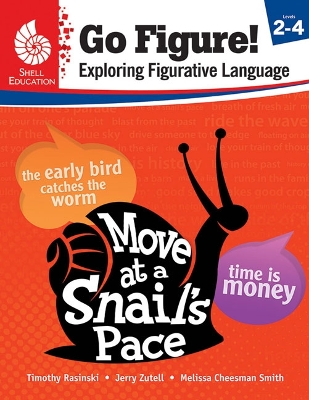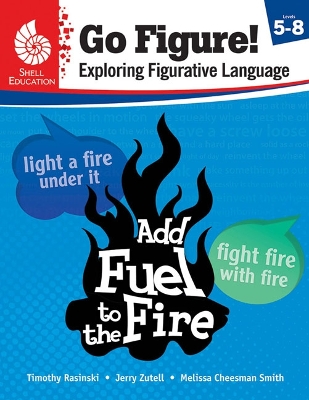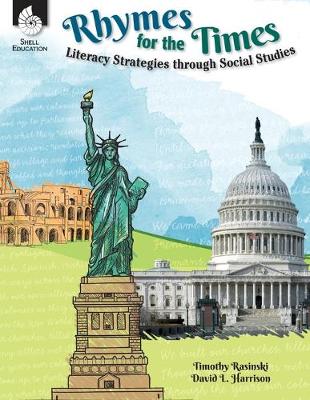Classroom Resources
5 total works
Go Figure! Exploring Figurative Language, Levels 2-4
by Timothy Rasinski, Jerry Zutell, and Melissa Cheesman Smith
Published 2 January 2017
Go Figure! Exploring Figurative Language highlights a variety of common idioms for learners in grades 2 4. Students will deepen their skills in writing, understanding word meanings, and using context clues with this engaging classroom resource. Based on today's standards, this resource includes 20 content-based lessons in the areas of science, social studies, and mathematics. Teacher overview pages, student activities, and digital resources are included.
Prove It! Using Textual Evidence, Levels 6-8
by Melissa Cheesman Smith and Terri Schilling
Published 1 March 2018
Knowing how to cite textual evidence is a key component in reading and writing in education today. This resource equips teachers with the strategies they need to teach students how to cite and annotate textual evidence when reading and writing. Secondary school students will learn how to find evidence to support their opinions, incorporate that evidence in their writing, and accurately cite their sources. The ten lessons include proper MLA formatting, paraphrasing, using block quotation, creating a bibliography, the use of credible sources, avoiding plagiarism, and more. Students will apply what they've learned through twenty practice exercises. Citing textual evidence powerfully strengthens students' writing, develops analytical thinking and logic, and readies students for college and career with lessons that are aligned to McREL, TESOL, and WIDA standards.
Go Figure! Exploring Figurative Language, Levels 5-8
by Timothy Rasinski, Jerry Zutell, and Melissa Cheesman Smith
Published 2 January 2017
Go Figure! Exploring Figurative Language highlights a variety of common idioms and proverbs for students in grades 5 8. Students will deepen their skills in writing, understanding word meanings, and using context clues with this engaging classroom resource. Based on today's standards, this resource includes 20 content-based lessons in the areas of science, social studies, and mathematics. Teacher overview pages, student activities, and digital resources are included.
Rhymes for the Times: Literacy Strategies through Social Studies
by Timothy Rasinski and David Harrison
Published 4 January 2016
This resource enables teachers to incorporate today's career and college readiness standards into their lessons in a fun and intriguing way. The sixty poems that are included focus on social studies topics including US history and ancient civilizations. The use of poetry has many benefits that include increased literacy, fluency and reading comprehension. Each strategy lesson includes a model lesson, a template, an example lesson, a sample poem, and student pages. Students will be engaged in the verse format as they increase their literacy and understanding of social studies topics.
Prove It! Using Textual Evidence, Levels 3-5
by Melissa Cheesman Smith and Terri Schilling
Published 1 March 2018
Knowing how to cite textual evidence is a key component in reading and writing in education today. This resource equips teachers with the strategies they need to teach students how to cite and annotate textual evidence when reading and writing. Primary school students will learn how to find evidence to support their opinions, incorporate that evidence in their writing, and accurately cite their sources. The ten lessons include proper MLA formatting, paraphrasing, the use of credible sources, avoiding plagiarism, and more. Students will apply what they've learned through twenty practice exercises. Citing textual evidence powerfully strengthens students' writing, develops analytical thinking and logic, and readies students for college and career with lessons that are aligned to McREL, TESOL, and WIDA standards.




